What Makes A Volcano Dangerous? People
Millions of people worldwide live in the shadows of dangerous volcanoes
/https://tf-cmsv2-smithsonianmag-media.s3.amazonaws.com/filer/c3/a3/c3a36762-a3a5-4a3f-accb-da5ae1b0ef83/42-56733726.jpg)
Most of the world’s volcanoes are located deep beneath the sea surface along the mid-ocean ridges where the Earth’s crust spread and creates new ocean floor. Volcanoes on land often occur in subduction zones, where one tectonic plate is diving beneath another, or hotspots created by mantle plumes deep within the planet.
Living near an active volcano would not seem to be a smart choice, but many people make their homes in the shadows of these simmering mountains. They might be lured by the high-quality volcanic soil or the potential for geothermal energy. Or a volcano might have been dormant long enough that people began to think it would no longer be active.
And of course, living far from a volcano is no guarantee a person will never experience the effects of one—the eruption of Tambora, Indonesia, in 1815, for example, spewed so much material into the atmosphere that it caused months of global cooling. More recently, the Icelandic volcano Eyjafjallajökull disrupted days of air travel in Europe.
But there are millions of people living around the world who could be displaced or killed by the ash, lava, mudslides or other dangers of nearby volcanoes. Here are seven that could be especially deadly:
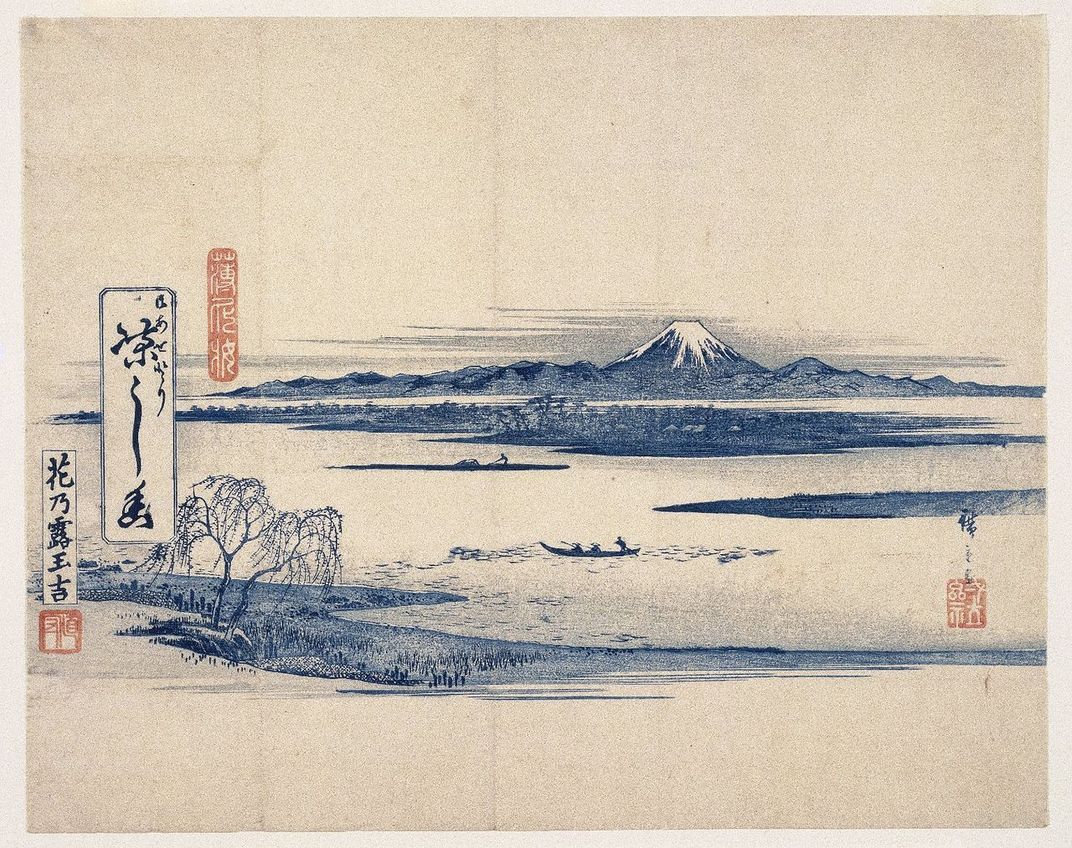
Mount Fuji, Japan
Mount Fuji is Japan’s highest spot, noted for its beauty. The volcanic mountain has long been a subject for Japanese art. And it also inspires hundreds of thousands of people to climb to its peak each year.
But the volcano, which last erupted in 1607, is considered active, and the 2011 Tohuku-Oki earthquake may have raised the risk that Fuji could erupt again in the near future, scientists reported in the July 4 Science.
“We cannot establish a direct relation of cause and effect between quakes and volcanic eruptions, even if statistically the former lead to an increase in the latter,” the study’s lead author, Florent Brenguier, of the Institute of Earth Sciences in Grenoble, France. Brenguier told the Guardian. “All we can say is that Mount Fuji is now in a state of pressure, which means it displays a high potential for eruption. The risk is clearly higher.”
The Japanese government issued a new evacuation plan for the region around Mount Fuji earlier this year. According to that plan, some 1.2 million people could be displaced by an eruption and millions more could face health risks from volcanic ash.
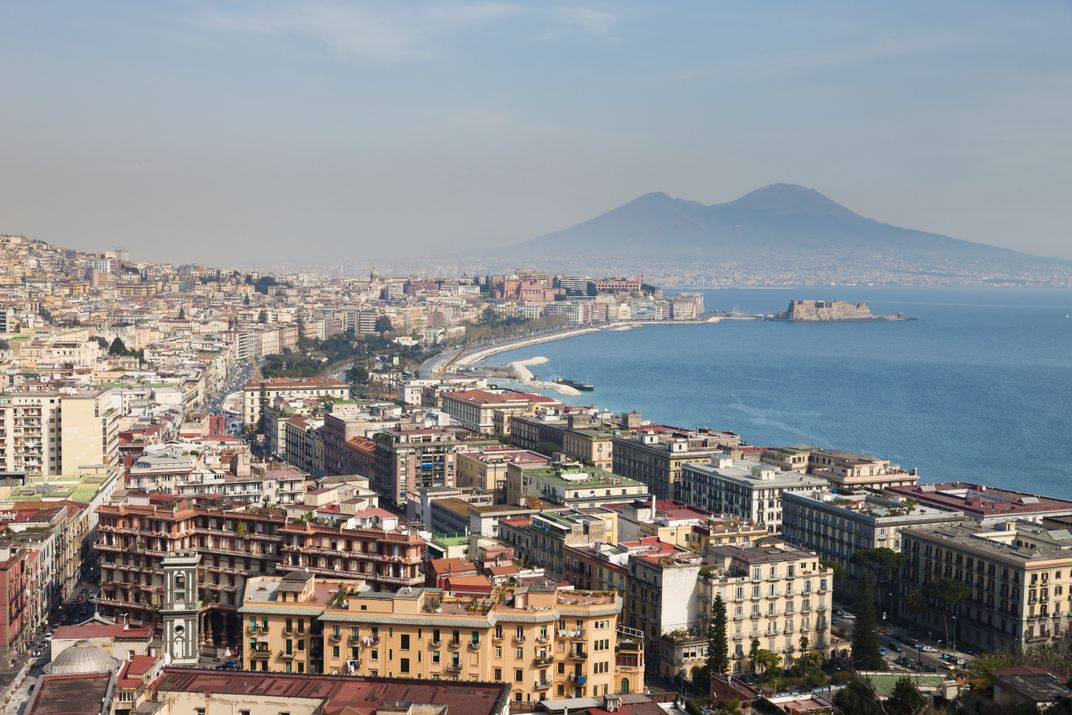
Mount Vesuvius, Italy
In 79 A.D., Vesuvius erupted, burying the nearby city of Pompeii under four to six meters of ash. At the same time, the wealthier town of Herculaneum was destroyed by volcanic mudslides.
Vesuvius has erupted more than 30 times since then, most recently in 1944, when several villages were destroyed. But more worrisome is the Italian city of Naples, which sits near the volcano and is today home to more than a million people within the city limits and another 3 million spreading out into the countryside.
A 2006 study published in the Proceedings of the National Academy of Sciences predicted that the city could be destroyed should Vesuvius explode in a manner similar to its worst eruption, which occurred nearly 4000 years ago.
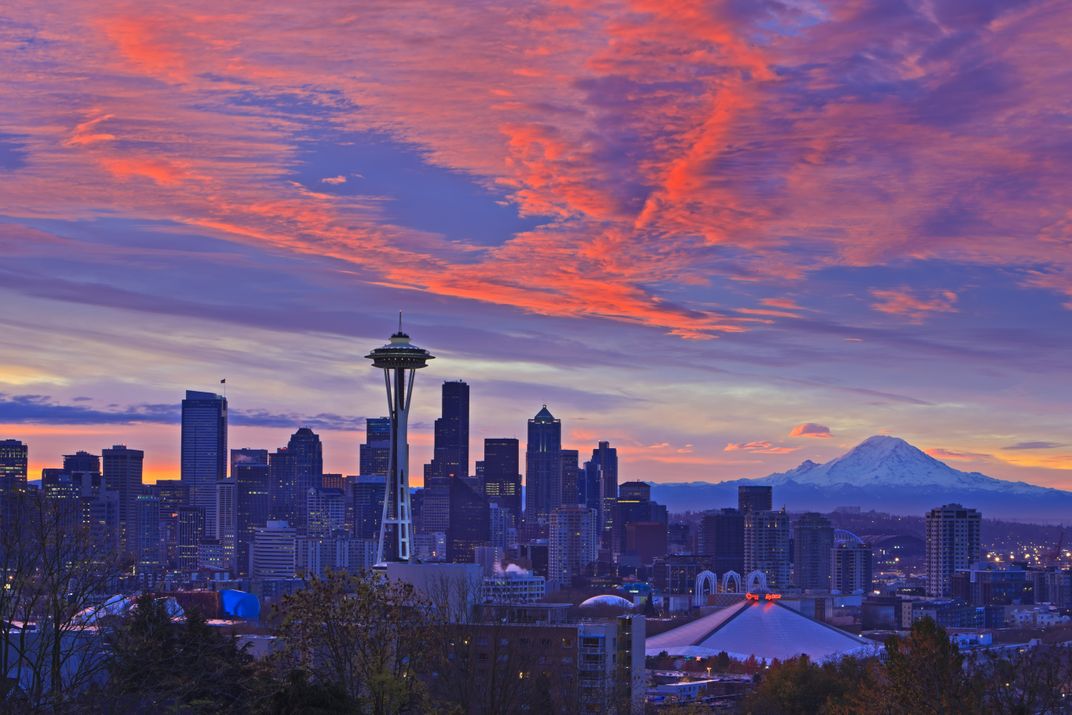
Mount Rainier, Washington
Residents of Seattle may have thought they had little to worry about when it came to Mount Rainier, the snow-covered volcanic mountain sitting a short drive from the city. After all, the volcano last erupted in 1894.
But a study published in the July 17 Nature is a reminder that the volcano is still active: The study didn’t put an estimated on the timing of the next eruption, but researchers were able to map the conduits and magma chambers that feed Rainer’s magma, capturing a picture of melting right at the subducting slab beneath the slumbering giant.
The mountain’s dangers extend beyond the ash, pumice and lava people most associated with volcanoes. This volcano is also known for steam eruptions and mudflows—mixtures of volcanic debris and water as heat from the volcano melts ice on the mountain. An eruption 5600 years ago spawned a mudflow that covered a huge section of land that today is home to the city of Tacoma, a couple of Seattle suburbs and several nearby towns.
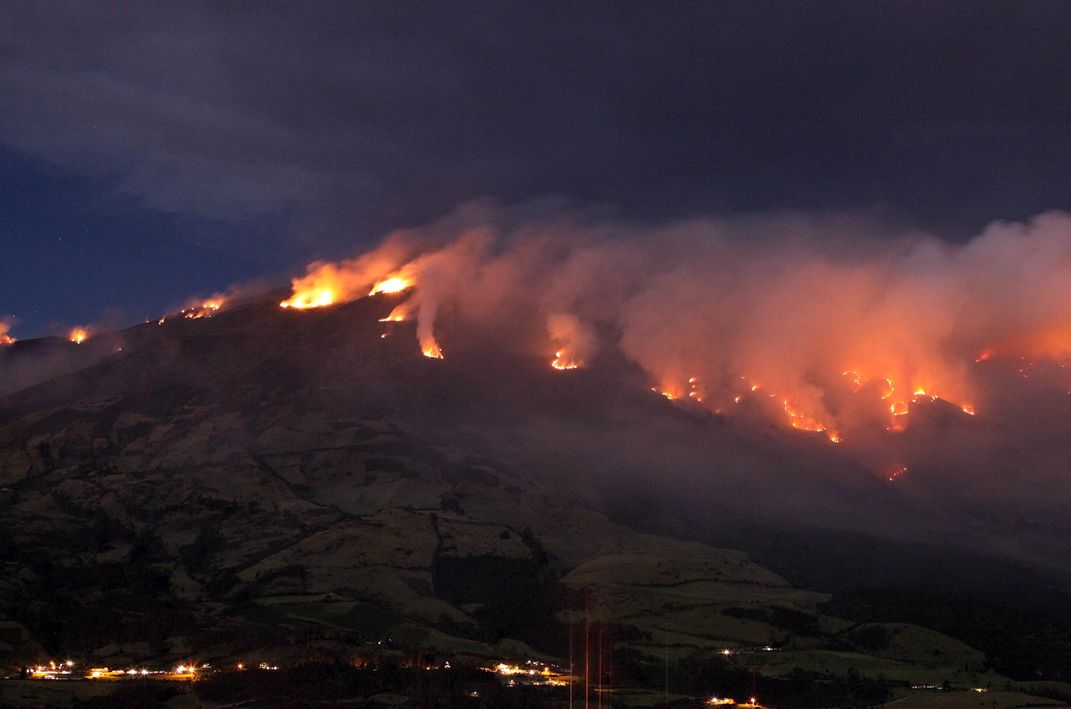
Galeras, Colombia
The city of Pasto, Colombia sits a mere 9 kilometers from Galeras, the country’s most active volcano. Galeras has been active for around a million years and has continued that activity into the 21st century, erupting several times since the year 2000. Those eruptions have caused inconvenience for the thousands of people evacuated during the events, but there have been no reports of serious injury or damage.
Galeras does, however, serve as a reminder of the dangers that volcanologists can face when studying volcanoes. An unexpected eruption in 1993 killed six scientists and three tourists on an expedition to the volcano’s summit.
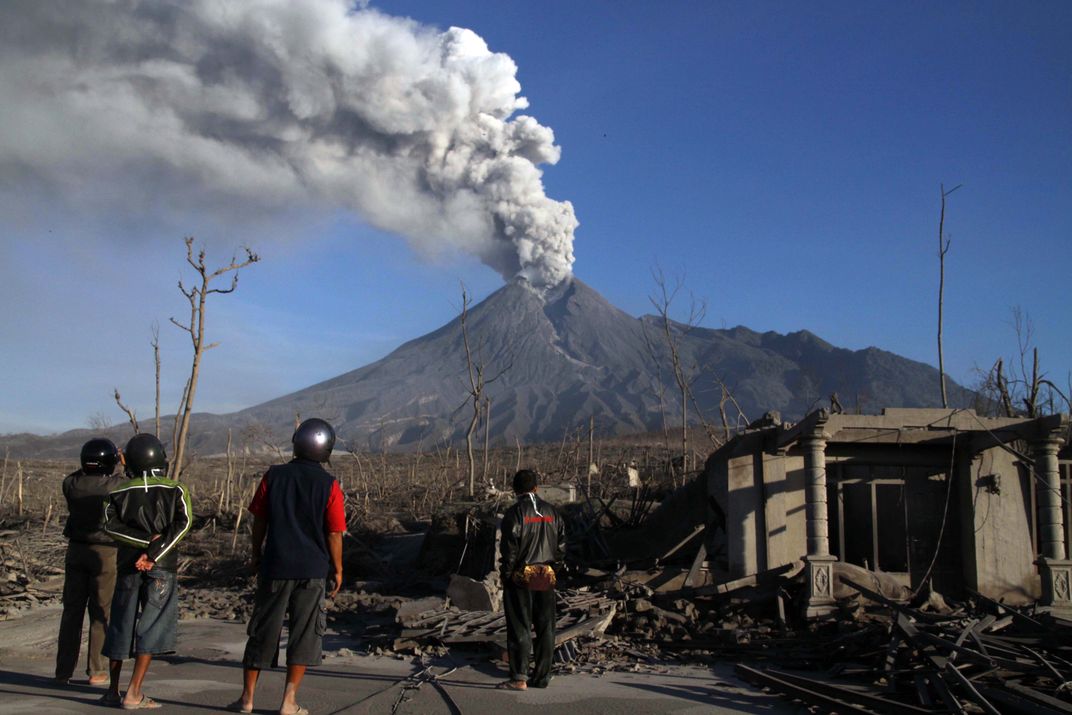
Mount Merapi, Indonesia
Indonesia has been home to some spectacularly dangerous volcanoes, such as Krakatoa, which is thought to have killed more than 36,000 people in an 1883 eruption. Today, that nation’s most active volcano is Mount Merapi, located on the island of Java. The city of Yogyakarta, home to more than 600,000 people, does not just sit next to Merapi—the city’s outskirts actually bump right up to the volcano’s southern slopes.
Merapi erupts every five to 10 years—and sometimes more frequently—and is noted for its pyroclastic flows that send floods of hot rocks and gas down the mountain’s steep flanks. The volcano has been deadly in the past, killing 1300 in a 1930 eruption and at least 190 people in eruptions since 2010.
Nearby residents often get reminder of the mountain’s presence in the form of smoke rising from the peak, which can be seen most days.
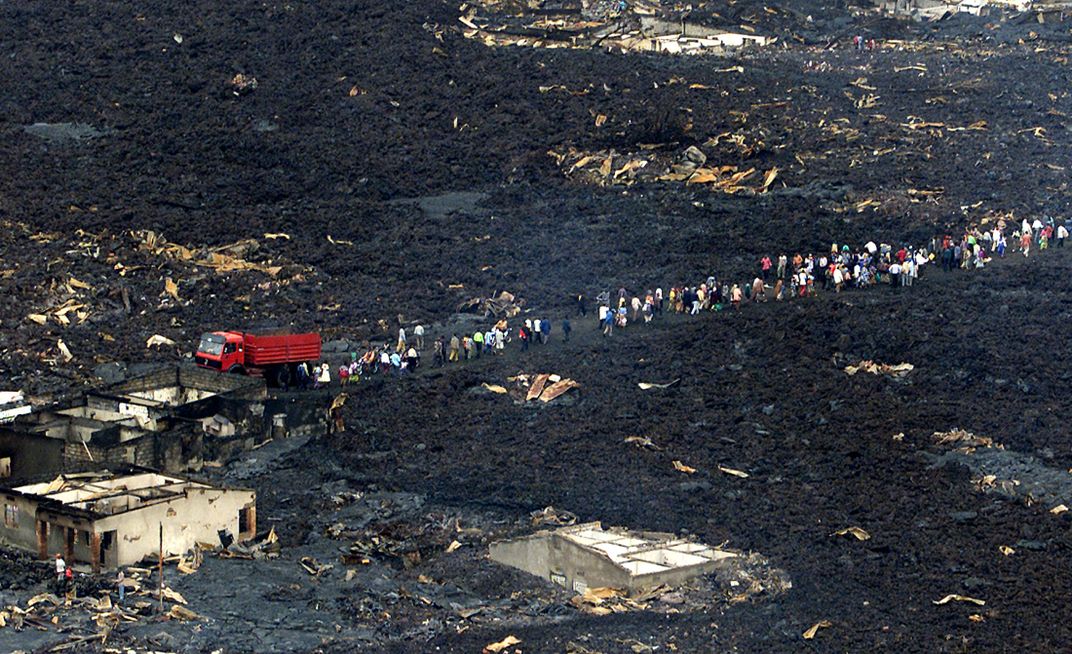
Mount Nyiragongo, Congo
A million people in the city of Goma, Congo, lie between Lake Kivu and Mount Nyiragongo, an active volcano located within Virunga National Park. The volcano has erupted more than 30 times since 1882 and has sometimes been home to a churning, bubbling lava lake in between.
During the volcano’s last major eruption, in 2002, some 400,000 people evacuated across the border into Rwanda, fleeing lava that flowed into the city itself. Nearly 150 people were killed by deadly gas and collapsed buildings. And 120,000 city residents were left homeless after lava and accompanying earthquakes destroyed around 15 percent of the city.
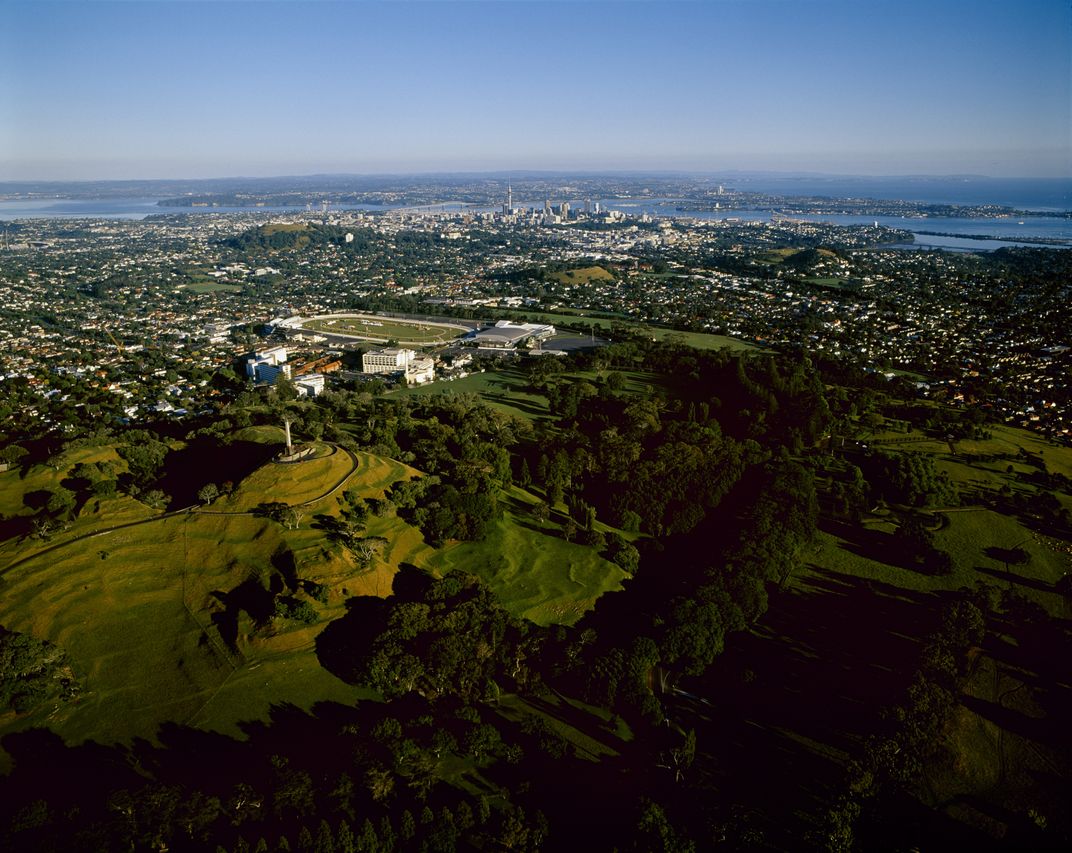
Rangitoto, New Zealand
Auckland, New Zealand is surrounded by dead volcanoes. These are monogenetic volcanoes, a type that erupts only once. But scientists reported last year in the Journal of Volcanology and Geothermal Research that one of those volcanoes, Rangitoto, erupted semi-continuously for around 1000 years.
The researchers said they were not sure what the findings mean for the rest of the volcano field. But the study’s lead researcher, Phil Shane of the University of Auckland, warned in the New Zealand Herald that Auckland—home to 1.4 million people—may “need to think about hazard planning and risk in a very different way.” Low-lying areas to the south of the city could be a particular worry as there is nothing there to hinder any destructive lava flow.
/https://tf-cmsv2-smithsonianmag-media.s3.amazonaws.com/accounts/headshot/Sarah-Zielinski-240.jpg)
/https://tf-cmsv2-smithsonianmag-media.s3.amazonaws.com/accounts/headshot/Sarah-Zielinski-240.jpg)